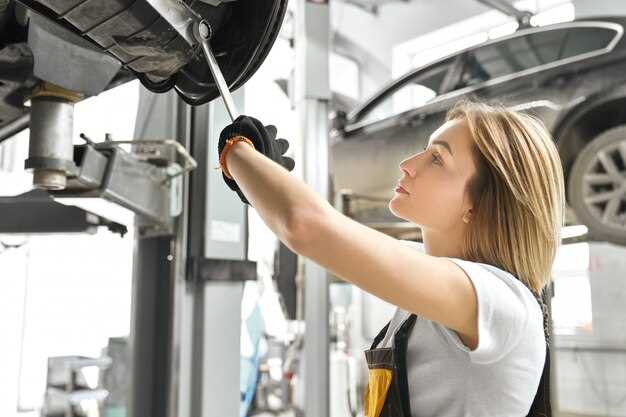
For muscle car enthusiasts, the exhaust system is not merely a component; it’s a critical element that defines the vehicle’s performance and sound. Upgrading your exhaust system can significantly enhance your car’s horsepower, torque, and overall efficiency, making it a top priority for those looking to get the most out of their ride. However, with a wide array of options available on the market, selecting the right exhaust system requires careful consideration and understanding of your specific needs.
When choosing an exhaust system, you must first assess your vehicle’s specifications and your driving style. Whether you are aiming for increased track performance, a deeper sound, or improved gas mileage, knowing what you want will help narrow down the choices. Cat-back, headers, and axle-back systems all offer different benefits and drawbacks, which can influence your decision. Additionally, factors such as material type, pipe diameter, and sound preference should be evaluated to find the perfect match for your muscle car.
Moreover, it’s essential to consider the legal regulations and environmental impact of your chosen exhaust system. Modifications can sometimes lead to increased emissions or noise levels that are not compliant with local laws. Therefore, understanding the regulations that apply in your area will guide you in selecting a system that not only boosts performance but also keeps you within legal limits. In this article, we will delve deeper into the various types of exhaust systems, their benefits, and how to make the most informed decision for your muscle car.
Understanding Different Types of Exhaust Systems for Muscle Cars

When selecting an exhaust system for a muscle car, it’s essential to understand the various types available, as each offers unique characteristics and performance benefits. The primary types of exhaust systems include cat-back systems, axle-back systems, and header-back systems.
A cat-back exhaust system replaces everything from the catalytic converter back, including the pipes, mufflers, and tips. This type is popular for its ability to enhance horsepower and torque while improving sound. The increased pipe diameter and upgraded muffler design allow for better exhaust flow, which can result in improved engine performance.
Axle-back exhaust systems focus on replacing the components located behind the rear axle. While they do not affect exhaust flow from the engine to the catalytic converter, they can significantly alter the sound and appearance of the vehicle. Axle-backs are often a more affordable option for those primarily interested in enhancing the auditory experience of their muscle car without extensive performance modifications.
Header-back exhaust systems involve a complete overhaul, commencing from the header, where exhaust gases exit the engine, and extending all the way to the tailpipe. This comprehensive approach ensures optimized performance gains by allowing more efficient exhaust flow from the very beginning of the system, which can lead to noticeable improvements in power and throttle response.
In addition to these main types, there are options like turbo-back systems for cars equipped with turbochargers, which incorporate components specific to forced induction engines. Moreover, variable exhaust systems allow drivers to adjust the sound and performance characteristics on demand, catering to both aggressive driving and quieter cruising.
Ultimately, choosing the right exhaust system depends on specific goals, whether they are increased horsepower, improved sound, or aesthetic enhancement. Understanding these various types will help muscle car enthusiasts make informed decisions to achieve their desired performance outcomes.
Evaluating Sound and Performance Benefits for Your Specific Muscle Car Model
When selecting an exhaust system for your muscle car, understanding how different options affect both sound and performance is crucial. Each muscle car model has distinct characteristics and engine configurations that influence the best exhaust choice.
Begin by assessing your vehicle’s factory exhaust setup. Stock systems are often designed for noise compliance and fuel economy, which may limit performance. Upgrading to a performance exhaust system can enhance not only horsepower and torque but also the overall driving experience.
Next, consider the specific sound profile you desire. Muscle cars typically benefit from deeper, more aggressive tones, which can be achieved through different materials and design choices. For instance, stainless steel systems produce a more resonant sound compared to mild steel options. Additionally, the style of the muffler–chambered, straight-through, or turbo–will greatly influence the exhaust note. Chambered mufflers create a classic, rich sound, while straight-through designs often yield a louder and more aggressive tone.
Performance gains are often measured in horsepower and torque increases. Research has shown that an aftermarket exhaust can significantly reduce back pressure, allowing your engine to breathe more freely. This is particularly important for high-powered muscle cars. However, the actual performance benefits can vary widely based on engine type and the specific configuration of the exhaust system. For instance, systems designed for V8 engines will differ in design compared to those for V6 or turbocharged models.
Lastly, evaluate the system’s compatibility with any other modifications you may have made to your vehicle. If you have upgraded your intake or installed a supercharger, pairing these modifications with an optimized exhaust system can compound performance gains, ensuring you achieve the desired horsepower and torque output while enjoying the enhanced sound signature unique to your muscle car.
Key Installation Considerations and Maintenance Tips for Exhaust Systems

When installing an exhaust system on your muscle car, one of the primary considerations is ensuring compatibility with your vehicle’s engine and model. Verify that the exhaust system is designed specifically for your car to achieve optimal performance and fitment.
Proper alignment during installation is crucial. Misalignment can lead to exhaust leaks, reduced efficiency, and increased noise levels. Use jack stands to elevate the vehicle securely, allowing easy access to all components. Take time to align the exhaust pipes, hangers, and flanges before tightening any bolts.
Consider the type of exhaust hangers used. Rubber hangers can provide better vibration absorption, which minimizes noise and prolongs the lifespan of the system. Ensure that the hangers are not excessively worn, as this can lead to unnecessary rattling and movement.
While installing the exhaust system, inspect existing gaskets and replace them if they show signs of wear or damage. This ensures a proper seal, preventing exhaust leaks and promoting efficiency. Use high-temperature gasket materials for the best results.
After installation, it is essential to regularly check for any changes in sound or performance, as these may indicate potential issues such as leaks or obstructions. Schedule periodic inspections to monitor the condition of the exhaust system and its components.
Cleaning your exhaust system helps prevent rust and corrosion, especially in areas prone to moisture accumulation. Use appropriate cleaning agents and consider applying a high-temperature paint to exposed areas for additional protection.
Ensure that hangers are secured firmly after installation to prevent movement. Check and retighten connections periodically, especially during routine maintenance. Vibration can cause bolts to loosen over time, so it’s important to address this proactively.
Lastly, ensure that your exhaust system complies with local emissions regulations. Depending on your region, modifications may require ensuring that catalytic converters and other emissions controls remain intact. Always keep supporting documentation for any modifications made.
